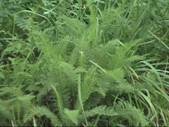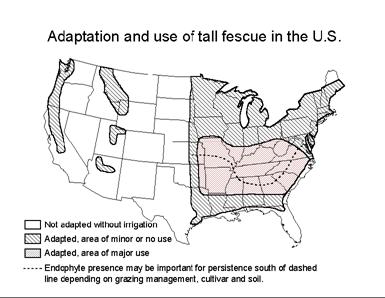

| Components | |||||||
The seed mix of an Eco-Lawn depends on the specific mix from the seller. Common elements in a mix are a variety of fescue grasses, perennials ryegrasses and broadleaf perennials such as English daisy, yarrow and strawberry clover. Some mixes contain legumes that naturally replenish nitrogen in the soil to feed the other plants in the mix. Many mixes have been tested and manufactured for self-fertilizing properties, dwarfed growth, and drought tolerances. Tom Cook from Oregon State University has a specific seed mixtures created with the basic components of perennial ryegrass and Kentucky bluegrass other additions include yarrow, Roman chamomile, English lawn daisy, and clover. This mix has been specifically composed for the environment in Corvalis , OR , and when selecting a mix be sure to pick one relevant to the area you live in, as previously mentioned.
English Daisy Yarrow Roman Chamomile
Pictures from: www.cobleskill.edu/ courses/orht321/list9.htm Why fescue?
Fescues are shade tolerance, stay green all year, and have very good drought resistance. Fine Fescues are more cold and shade tolerant than Tall Fescue, but both are used though-out much of the Central to Northern USA states. “Tall fescue (Festuca arundinacea) is one of the most popular grasses in the mountain and upper Piedmont areas of Georgia , an area that extends as far south as Atlanta . Its popularity relates to its ease of establishment through seeding and its green color during spring and fall, when warm-season turfgrasses are dormant and brown. Tall fescue is a perennial bunch-type grass that grows rapidly during spring and fall.” Gil Landry, Jr., Extension Turf Specialist Tall Fescue Lawn Management There is an Eco-lawn mixture of a variety of fescues comprised of the following seven fine fescue grasses:
This formula is exclusive to Wildflower Farm (available on the internet). None of the species are genetically modified and four of the fescues are native species and three are hybridized species. Pictures from: http://www.uark.edu/depts/agronomy/west/endophyte/endophyte.html For the past 50 years, Dutch clover has been considered a noxious lawn weed, but before that it was an important component in fine lawns—and for good reason. Clover is drought-tolerant, virtually immune to diseases, and distasteful to common turf insects. And it generates its own food by fixing nitrogen in the soil. From www.organicstyle.com |
|||||||





